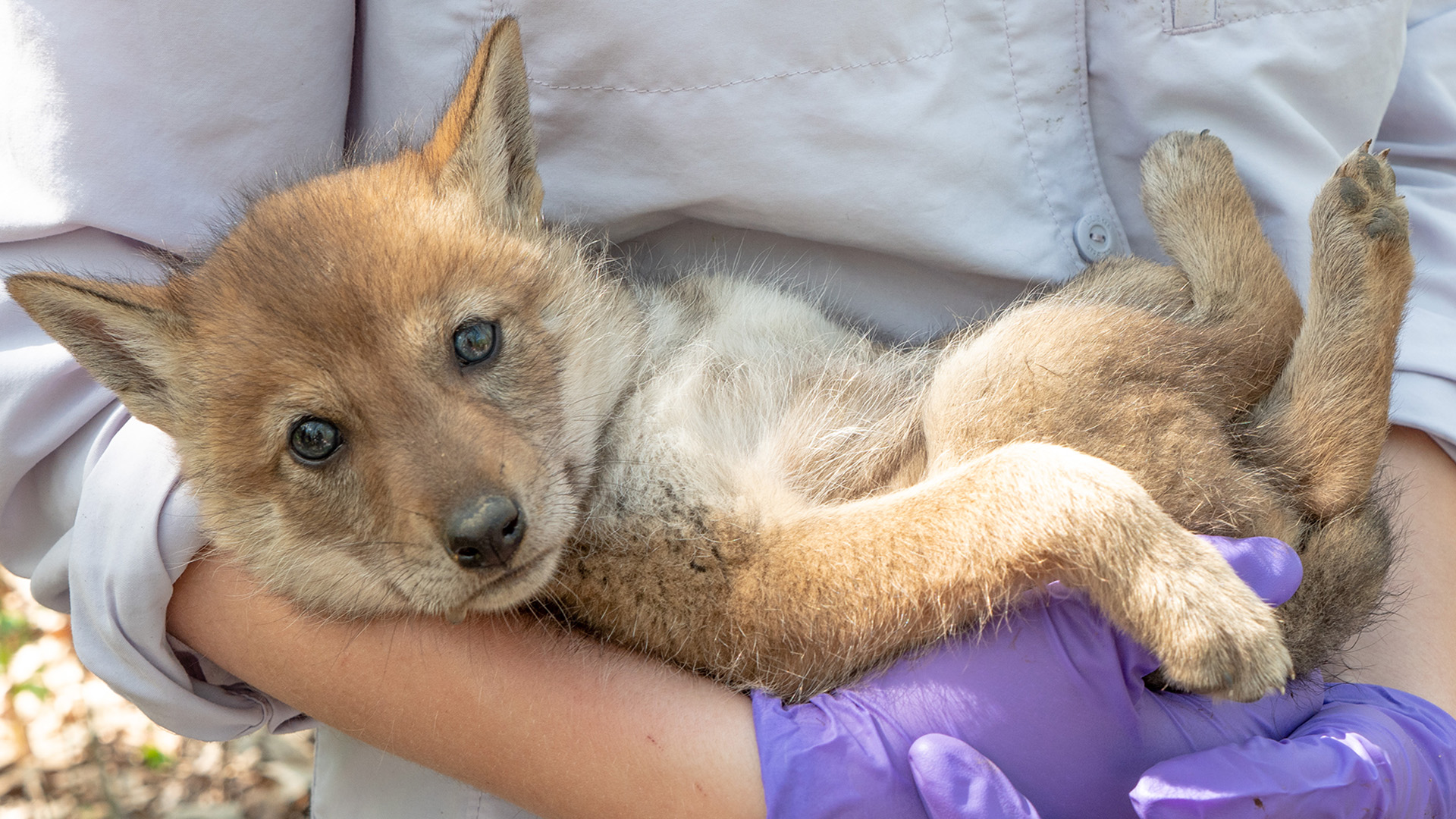At a time of day when most Chicagoans are preparing for their morning commutes, Andy Burmesch is crawling headfirst into a hole. It's the size of a coffin and stinks like rotten meat, but Burmesch is undeterred. The field technician wriggles into the ground until only his boots are visible, and emerges triumphantly moments later. In a gloved hand he holds a coyote pup—every bit as cute as its domestic K9 cousins—by the scruff of its neck.
“Can somebody grab this guy before he pees on my face?”
Sure enough, the waterworks begin seconds after Burmesch's head clears the splash zone. This, it turns out, is just another Wednesday in the world of coyote research.
Since 2000, Burmesch and his colleagues in the Urban Coyote Research Project have kept tabs on coyotes in the Chicago area. In the process, they’ve gathered an unprecedented wealth of data on where and how these animals live.
The litter of four that Burmesch disinters on this May morning in Barrington puts the total number of animals in the study at more than 1,200. Estimates suggest that Chicago's total population is at least twice that. In addition to pups, that community includes both free-range lone coyotes, monogamous sets of parents, and a small population of rogues who decamp for other cities, like Green Bay, Wisconsin.
Coyotes live all over Cook County, but moms and dads, much like their human counterparts, prefer to raise their young in the privacy of the suburbs. Each spring, field technicians like Burmesch track these mating adults in Cook County's parks and forest preserves, wading through thorny brambles and swampy meadows in search of a promising den.
When they find a litter of pups, Burmesch's team weighs and measures them, take blood and tissue samples, and tag each one with a subcutaneous RFID chip. No larger than a grain of rice, it’s the same type of device that veterinarians use to ID pets. When the coyotes reach adolescence, researchers often re-tag them with radio collars, which make it easy to determine where they settle down and have pups of their own.
As Burmesch and his team examine their litter of four, they likely do so under the wary eye of a parent. According to Ashley Wurth, a PhD candidate at Ohio State University working for the project as part of her dissertation, the mom is probably hiding nearby. Soon after her pups' release, she says, mom will move her young into a new den nearby—a relatively small disruption of their day-to-day life.
“After a while, she would have moved them anyway,” says Wurth. “They’re pretty paranoid animals.”
The same can be said of their human neighbors: though the Urban Coyote Research Project's stated purpose is to better understand how the animals might spread disease in a hypothetical outbreak, much of their work is also combating coyotes' negative public image. According to Chris Anchor, a wildlife biologist who has been a part of the project since its inception, coyotes who live in more developed parts of Chicago have adjusted their schedules to minimize human contact, hunting and foraging late at night.
“The vast majority work very, very hard not to been seen,” he says.
When the pups are finished being tagged (both officially and in a few selfies), they’re turned loose, and vanish into the underbrush. There’s a good chance none of them will ever meet the Urban Coyote Research Project again; some may avoid future capture, while others will leave the area entirely or simply die before reaching adulthood. But Anchor, a lifelong employee of the Forest Preserve District of Cook County, remains optimistic about their chances.
“What amazes me most about these animals,” he says, “is how adaptable they are. Their habitats were destroyed more than 100 years ago, but they’ve found a way to come back and survive and thrive among us.”




